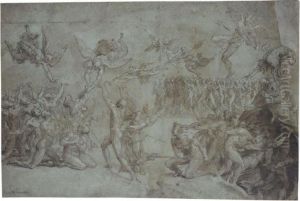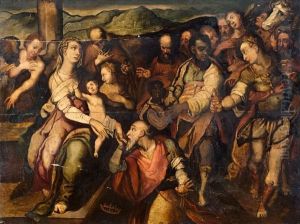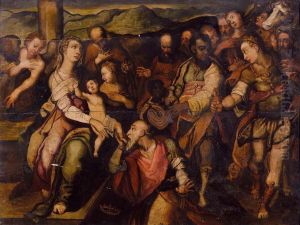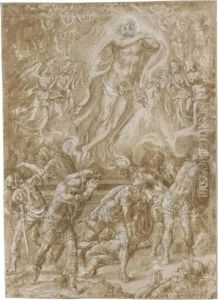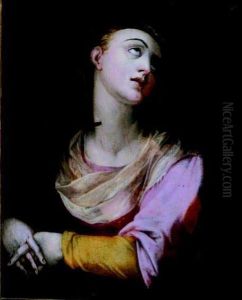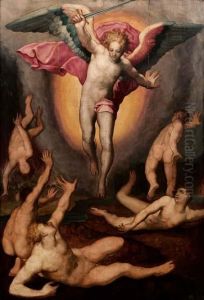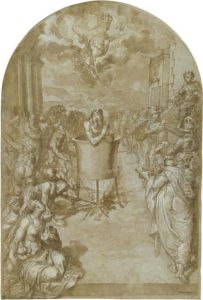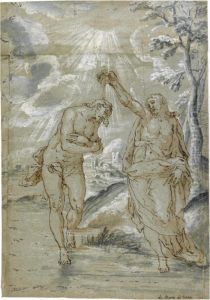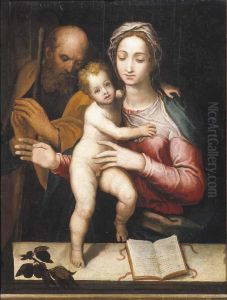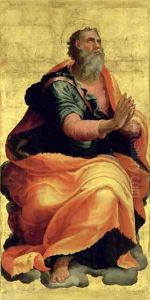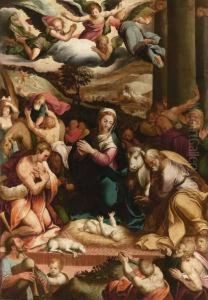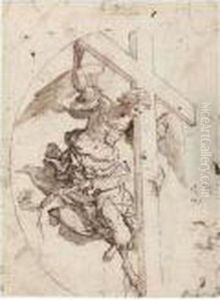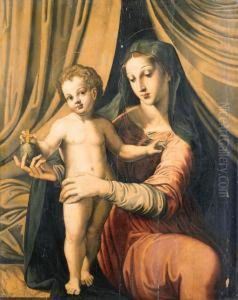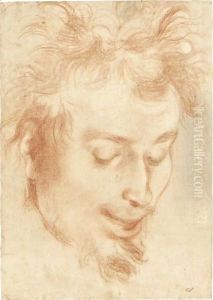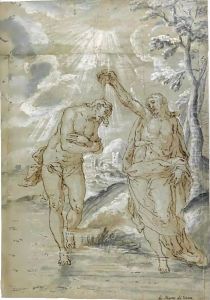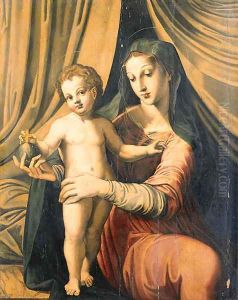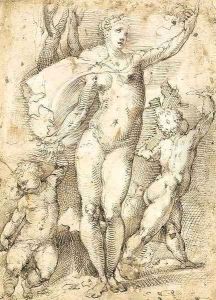Marco Pino Paintings
Marco Pino, also known as Marco da Siena after his birthplace, was an Italian painter of the Renaissance period. Born in Siena in 1521, Marco Pino was deeply influenced by the works of Michelangelo and Raphael, two towering figures of the High Renaissance. His initial training took place in Siena, but his ambition and quest for artistic growth led him to Rome, where he was exposed to the works of the great masters and the burgeoning Mannerist movement, which was to greatly influence his style. In Rome, Pino worked on various projects, including decorations for the Vatican under the patronage of Pope Julius III. His work in Rome helped him to develop a style characterized by elongated figures, vibrant colors, and a dynamic use of space, hallmarks of the Mannerist aesthetic. Despite his contributions to several important projects in Rome, comprehensive documentation of his work in the city is sparse, leading to a somewhat elusive understanding of his contributions during this period. Marco Pino's career took him beyond Rome to Naples, where he became a prominent figure in the Neapolitan art scene. In Naples, he executed some of his most significant works, including altarpieces and frescoes for local churches. His work in Naples demonstrates a maturity in his style and an ability to adapt to the local tastes and artistic traditions, blending his Mannerist influences with the Neapolitan penchant for realism and emotional expressiveness. Throughout his career, Marco Pino was recognized for his skill in both fresco and oil painting, contributing significantly to the Italian Renaissance's visual narrative. His work reflects the transition from the High Renaissance's emphasis on harmony and proportion to the Mannerist movement's exploration of form and emotion. Marco Pino passed away in Naples in 1583, leaving behind a legacy that, while not as widely recognized as some of his contemporaries, represents an important bridge between the Renaissance and Mannerist periods in Italian art history.
